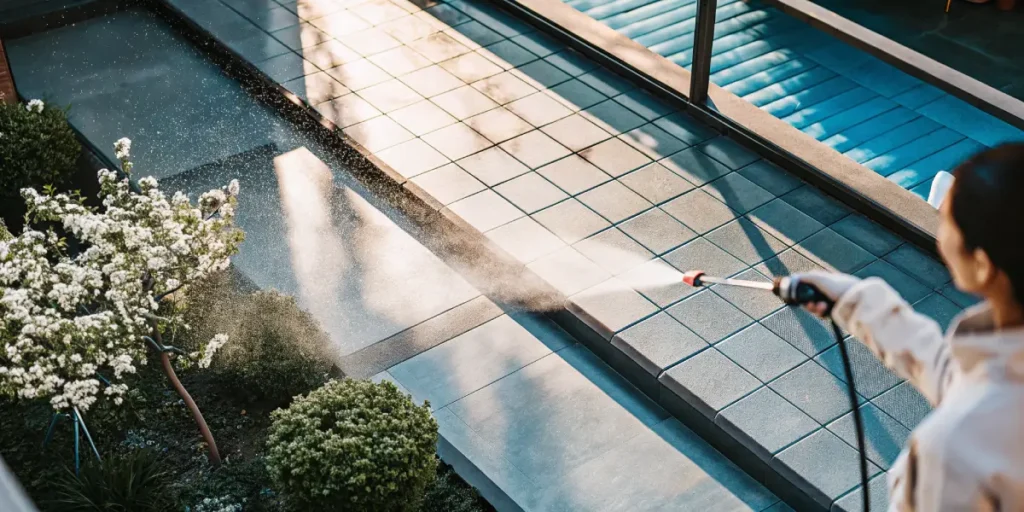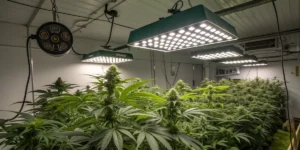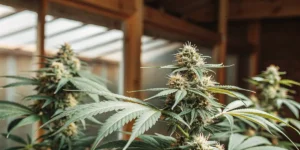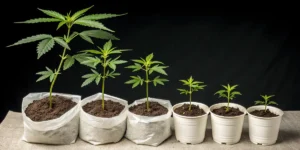Powdery mildew is a common issue many cannabis growers face, especially during the flowering stage. Using hydrogen peroxide for powdery mildew during flowering can be a game-changer. This simple household item can help preserve your precious buds and keep your plants healthy. But how does it work? Let’s dive into the details.
Many growers worry about applying treatments during flowering because the buds are sensitive. However, hydrogen peroxide is a safe and effective option when used correctly. It breaks down into water and oxygen, leaving no harmful residues. This makes it ideal for treating powdery mildew on flowering plants.
When mildew strikes, quick action is crucial. Hydrogen peroxide can stop the spread before it damages your crop. Knowing the right concentration and application techniques ensures that your plants thrive without risking the quality of your harvest. In this article, we’ll explore how to effectively use hydrogen peroxide spray for powdery mildew in the flowering phase.
Benefits of Using Hydrogen Peroxide
Hydrogen peroxide is not only effective but also versatile. It serves multiple purposes in the garden beyond just treating mildew. This makes it a valuable tool for any grower. It’s known for its antifungal properties, which directly target the mildew spores, preventing them from multiplying.
The effectiveness of hydrogen peroxide on powdery mildew during flowering is well-documented. It can penetrate the mildew’s structure, breaking it down at a cellular level. This disrupts the mildew’s lifecycle, giving your plants a fighting chance to recover. Plus, it’s easy to find and affordable, making it accessible for growers at any level.
Using hydrogen peroxide treatment for powdery mildew on flowering plants also offers the benefit of boosting plant health. The oxygen released from hydrogen peroxide can improve root oxygenation, promoting better nutrient uptake and overall plant vigor. This can enhance your plant’s natural immune response, making it more resilient to future mildew attacks.
In addition to its antifungal properties, hydrogen peroxide helps clean the plant surfaces. It removes any debris or residue left by the mildew, giving your plants a fresh start. This cleanliness is crucial for preventing reinfection and ensures that your plants can photosynthesize efficiently, which is particularly important during the flowering phase.
Safe Dilution Rates
Safety is paramount when applying any treatment during the flowering stage. A safe hydrogen peroxide dilution for powdery mildew on flowers is typically around 3%. This concentration is strong enough to tackle the mildew but gentle enough not to harm the plant.
To prepare the solution, mix one part hydrogen peroxide with three parts water. This dilution can be applied directly to the affected areas using a spray bottle. Make sure to cover both the top and underside of the leaves, where mildew often hides.
Using hydrogen peroxide to treat powdery mildew in flowering stage requires careful attention to dilution rates. It’s essential to avoid concentrations higher than 3%, as stronger solutions can cause leaf burn and stress the plant. Always label your spray bottles clearly to prevent accidental misuse.
For those growing on a larger scale, consider preparing a batch of the solution in advance. Store it in a cool, dark place to maintain its effectiveness. Regularly check the solution’s potency, as hydrogen peroxide can degrade over time, which might reduce its efficacy in treating powdery mildew.
Application Techniques
Spraying should be done during the cooler parts of the day. Early morning or late evening is ideal, as this reduces the risk of leaf burn from the sun. Gently mist the affected areas until they’re wet but not dripping.
Repeat the application every few days until the mildew disappears. Consistency is key, as missing a treatment can allow the mildew to return. Keep an eye on your plants and adjust the frequency as needed based on their recovery.
For best results, use a fine mist setting on your spray bottle. This ensures even coverage and helps the hydrogen peroxide spray for powdery mildew in flowering phase reach all parts of the plant. Be thorough, as mildew often hides in less accessible areas.
Avoid spraying during windy conditions, as this can lead to uneven application and potential wastage of the hydrogen peroxide solution. Shield surrounding plants from overspray to prevent unintended treatment, especially if they do not require mildew control.
Common Mistakes to Avoid
One common mistake is using too high a concentration. While it might seem tempting to use a stronger solution for faster results, this can damage the plant tissue. Always stick to the recommended dilution to avoid harming your flowers.
Another mistake is inconsistent application. Skipping treatments can lead to a resurgence of mildew. Set a schedule and stick to it to ensure your plants remain mildew-free. If you notice any adverse reactions, stop treatment immediately and reassess your approach.
Over-application is another pitfall to watch out for when using hydrogen peroxide for powdery mildew during flowering. Excessive spraying can lead to waterlogged leaves, which may create an environment conducive to other diseases. Balance is crucial to maintaining plant health.
Ignoring environmental factors is a mistake that can undermine the effectiveness of hydrogen peroxide on powdery mildew during flowering. Ensure that your growing conditions, such as humidity and air circulation, are optimized to prevent mildew recurrence. Monitoring these factors can enhance the overall success of your mildew management plan.
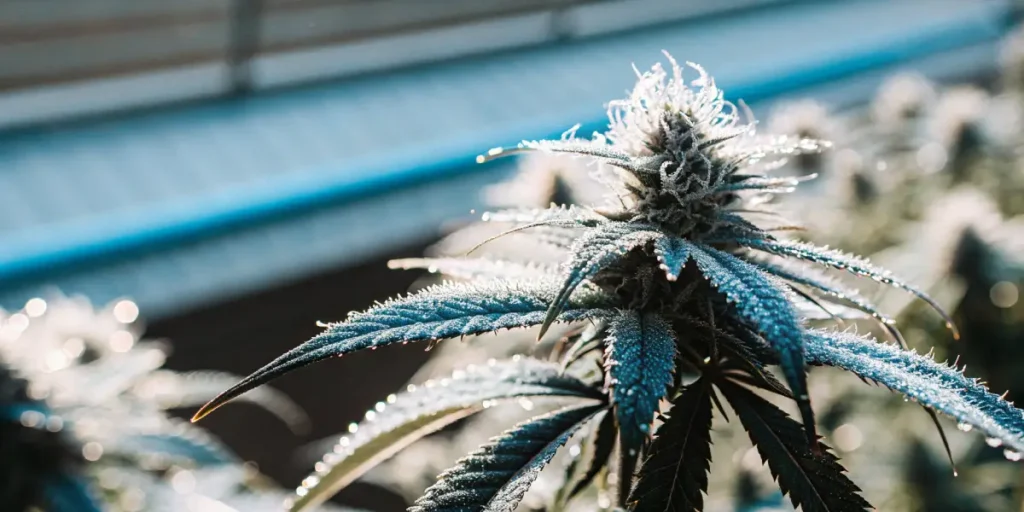
Choosing the Right Strain
Some strains are more resistant to mildew than others. For instance, the “Northern Lights” strain from Global Green Genetics is known for its robustness and can withstand humid conditions better than others. Selecting resistant strains can reduce the likelihood of powdery mildew taking hold.
On the other hand, strains like “Blue Dream” may require more attention to environmental controls to prevent mildew. Investing in a quality strain from a reputable source like Global Green Genetics can be the first step in preventing mildew problems.
When selecting strains, consider their growth patterns and susceptibility to mildew. Strains with denser foliage may need additional pruning to improve air circulation, which can aid in the prevention of mildew. Researching strain-specific needs can optimize your growing strategy.
Pairing resistant strains with the right cultivation practices enhances the effectiveness of hydrogen peroxide treatment for powdery mildew on flowering plants. By combining genetic resistance with proactive measures, you can build a comprehensive defense against mildew, ensuring a healthy and fruitful harvest.
Environmental Controls
Maintaining proper air circulation is crucial. Stagnant air promotes mold growth. Use fans to keep the air moving, especially in dense foliage areas. This helps keep the plant surfaces dry, making it harder for mildew to establish.
Humidity levels should be monitored closely. During flowering, keeping humidity below 50% is ideal. This creates an inhospitable environment for mildew. Dehumidifiers and proper ventilation can help maintain these levels consistently.
Apart from humidity control, temperature regulation is also vital. Mildew thrives in warm, humid conditions, so keeping temperatures stable can prevent its spread. Aim for a consistent temperature range that suits the strain you’re growing and discourages mildew proliferation.
Regularly clean and sanitize your growing area to minimize the risk of mildew and other pathogens. Remove dead plant material promptly, as it can harbor fungi. This proactive approach supports the use of hydrogen peroxide for powdery mildew during flowering by reducing potential sources of infection.
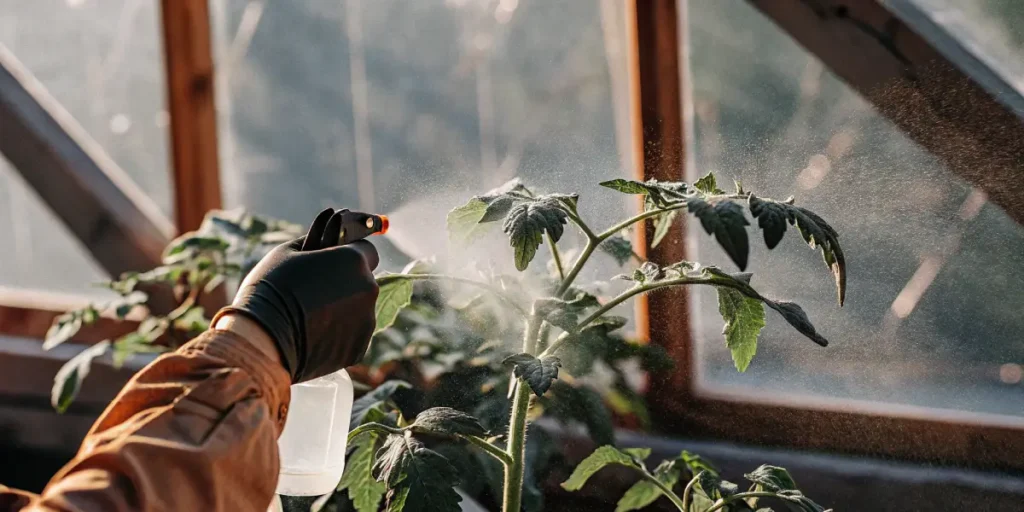
FAQs
How often should I apply hydrogen peroxide during flowering?
Applying hydrogen peroxide every 3-5 days is generally sufficient. This frequency allows for effective treatment without overwhelming the plant. However, each grower’s situation may vary, so monitor your plants closely for any signs of stress or improvement.
Adjusting the frequency based on the severity of the mildew and the plant’s response is key. If the mildew persists, you might need to apply more frequently. Conversely, if the mildew clears up quickly, reducing the application frequency can prevent unnecessary stress on the plant.
Consistency in application is essential for using hydrogen peroxide to treat powdery mildew in flowering stage. Keep a log of your treatment schedule and plant observations to track progress and make informed adjustments if needed. This systematic approach enhances the treatment’s success.
Consider the environmental conditions when planning your application schedule. During periods of high humidity or rapid mildew spread, more frequent treatments may be necessary. Conversely, drier conditions might allow for extended intervals between applications.
Is hydrogen peroxide safe for all cannabis strains?
Hydrogen peroxide is generally safe for most cannabis strains when used at the correct dilution. However, some strains may react differently. Always test the solution on a small area first to ensure there are no adverse effects.
Different strains have varying sensitivity levels. For instance, sensitive strains might need a more diluted solution to prevent damage. Checking with the seed supplier, like Global Green Genetics, for strain-specific advice can also be helpful.
When selecting a strain, consider its known responses to various treatments. Some strains may have less tolerance for hydrogen peroxide treatment for powdery mildew on flowering plants. Knowing your strain’s characteristics can inform your approach and prevent potential issues.
Communicate with other growers who have experience with your chosen strain. They can offer insights into how the strain typically responds to hydrogen peroxide and other treatments. This shared knowledge can be invaluable in optimizing your mildew management strategy.
Can I use hydrogen peroxide with other treatments?
Combining hydrogen peroxide with other treatments is possible, but caution is advised. Mixing chemicals without proper knowledge can lead to adverse reactions. Always research thoroughly before combining treatments.
For best results, use hydrogen peroxide as a standalone treatment initially. This allows you to gauge its effectiveness and the plant’s response. If additional treatments are needed, consider consulting with experienced growers or referencing reliable sources for guidance.
When integrating other treatments, ensure they are compatible with hydrogen peroxide. Some organic treatments, like neem oil or beneficial fungi, can be safely alternated with hydrogen peroxide applications, but avoid simultaneous use to prevent interactions.
Document your treatment combinations and their outcomes. Keeping detailed records helps refine your approach and provides valuable data for future reference. This systematic evaluation supports effective management of powdery mildew through informed decision-making.
What are the signs that hydrogen peroxide is working?
Visible reduction in the powdery mildew spots is the primary sign that hydrogen peroxide is working. You’ll notice the affected areas starting to clear up within a few days of treatment.
Healthy new growth is another indicator. As the mildew clears, your plant should start to produce vibrant, healthy leaves. Monitoring these signs can help you adjust your treatment plan for continued success.
Another sign of successful hydrogen peroxide treatment for powdery mildew on flowering plants is improved plant vigor. As the mildew diminishes, your plants should exhibit enhanced growth, indicating recovery and resilience.
Track changes in the severity of infection across different plant parts. Consistent recovery across leaves, stems, and buds suggests that the hydrogen peroxide spray for powdery mildew in flowering phase is effectively managing the issue.
Are there any alternatives to hydrogen peroxide for mildew treatment?
Several alternatives exist, such as neem oil and baking soda solutions. Each has its pros and cons. Neem oil, for instance, is effective but can leave a residue, while baking soda is a milder option.
It’s important to consider the specifics of your growing environment and the needs of your plants when choosing an alternative. In many cases, hydrogen peroxide remains a preferred choice due to its effectiveness and minimal residue.
Organic treatments like milk or potassium bicarbonate can also be considered as part of a mildew management plan. These options can be effective, but may require more frequent applications and careful monitoring to achieve desired results.
Ultimately, the choice of treatment depends on your specific needs and circumstances. Consider the availability, cost, and potential impacts of each option to select the best method for controlling powdery mildew in your flowering plants.

